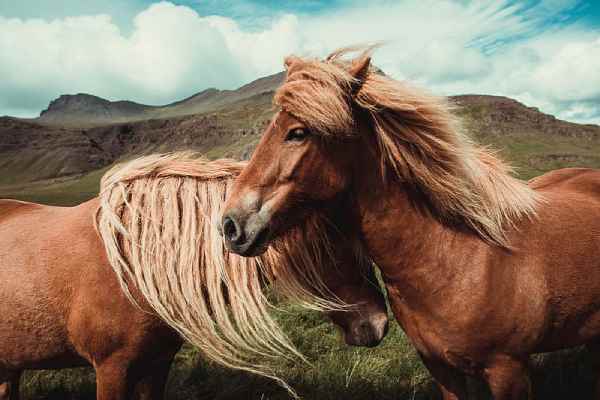Only a hand full of animals have manes, but when they do it gives them an incredibly magnificent appearance. The length of the animal’s hair was a sign not just of its sexual maturity but also of its overall health.
Table of Contents
1. (Male) Lions
Scientifically known as Panthera leo

A manes is defined as hair growing around the neck and head area. Contrary to popular belief, lions are not the only animals with manes. While lions may be the most popular animal with a mane, they are not the only ones.
Male lions start to develop their manes when they reach sexual maturity and the more successful fights they have, the faster their mane will grow.
Scientists believe that the size of a lion’s mane is related to testosterone levels and that a larger mane signifies a healthy animal. Furthermore, females frequently favor males with more grown manes.
Not only is a mane an indication of health and fighting prowess in many animals, but it is also often seen as attractive to potential mates.
2. Maned Wolves
Scientifically known as Chrysocyon brachyurus
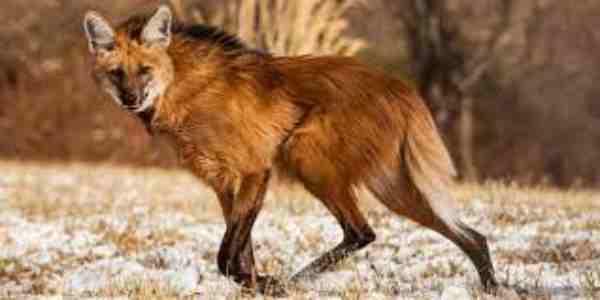
These little mammals resemble foxes a lot, and they utilize their manes to scare other animals and predators by making themselves appear larger.
Due to their auburn coloring, a few white spots (especially on the tail), and black mane, South American wolves stand out among other species.
Even though they don’t have manes as magnificent as lions or tigers, they nonetheless play a significant role in these animals’ protection strategies.
3. Zebras
Scientifically known as Hippotigris

Zebras are unique creatures, best known for their intricate black-and-white stripes. In addition to their distinctive stripes, zebras also have an erect mane running along the top of their neck.
While the purpose of this mane is not completely clear, there is a possibility that it might prevent predators from biting the zebra’s neck.
This vulnerable area is defenseless against attack, but the zebra might swing its head to defend itself if a predator tried to bite the underside of its neck.
Zebras have evolved other adaptations to help them survive in the wild, such as the ability to keep their necks cool during runs. They would quickly become overheated if they had a dense patch of hair on their necks.
4. Maned Sloths
Scientifically known as Bradypus torquatus
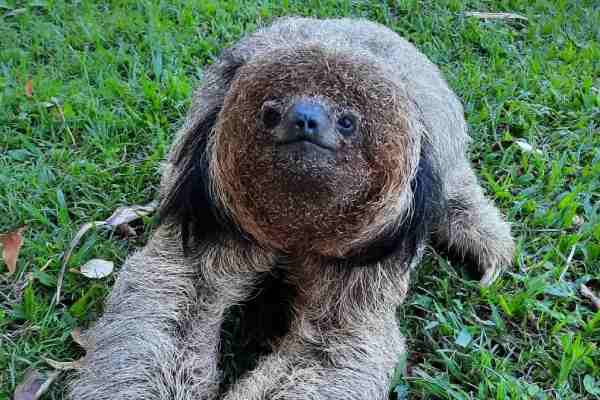
The maned sloth is a kind of mammal that lives only in Brazil, on the East Coast. The mane of a maned sloth is black and goes down its neck and shoulders. Males’ manes are usually longer than those of females. The maned sloth has thick hair that is usually the same color as the trees around it.
This helps it blend in with its surroundings. For this species, a full mane means that it is ready to breed. Usually, females are bigger than males, so males have to grow a thick mane to look bigger and healthier.
5. Giraffes
Scientifically known as Giraffa

Giraffes are the tallest mammals in the world, with necks that can reach up to six feet in length. But did you know that they also have the longest manes of any animal? The purpose of giraffe manes, which run over their entire neck, is thought to be the same as that of zebras and wildebeest.: to provide camouflage and deter predators.
However, because giraffes have such extraordinarily long necks, their manes serve little purpose in warding off predators.
In a giraffe’s natural habitat, there are no predators that could climb up and attack the back of its neck. In fact, when defending themselves, giraffes frequently utilize their heads and necks like swinging maces.
6. Wildebeests
Scientifically known as Connochaetes

The wildebeest is an iconic African animal, easily recognized by its shaggy mane and horned head. But did you know that the genus name is derived from the ancient Greek term for the mane? Their manes differ; the black wildebeest has a dark mane with a lighter “mohawk” mane.
The mane of the blue wildebeest is looser and nearly black. Both sexes grow manes, which serve the same function as manes in other African animals: defense against enemies and carnivores.
In the case of the wildebeest, the long mane may also help to dissipate heat and keep the animal cool in the hot African sun.
7. Wild Horses
Scientifically known as Equus ferus
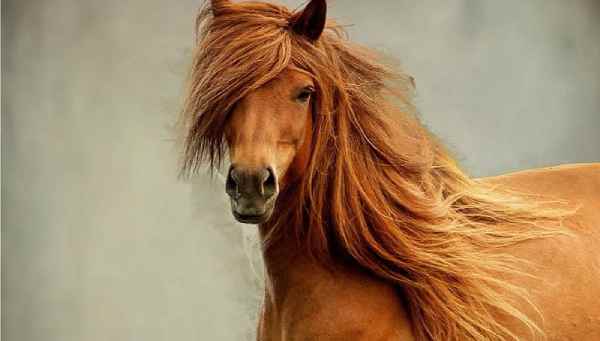
The wild horse is a hearty creature, able to endure harsh conditions and predators alike. One of the ways they’ve adapted to survive is through the growth of a long mane.
This mane serves as a barrier against predators in addition to providing some defense against insects. In addition, the mane helps the horse deal with cold weather by providing insulation.
Although the mane doesn’t offer as much protection as thick fur, it is still an important part of the wild horse’s adaptation.
Domesticated horses also have manes, although they are not as long or thick as their wild counterparts. This is due to the fact that domesticated horses no longer need to rely on their manes for survival.
8. Sable Antelopes
Scientifically known as Hippotragus niger
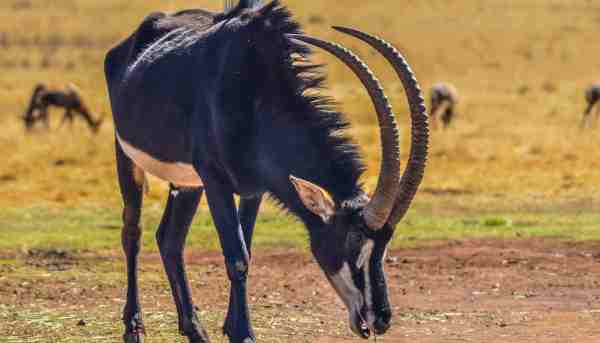
Sable antelopes are a unique species in that they are one of the few animals to develop two manes. The first mane is located on the neck and is identical to the mane of a Roan antelope.
The second mane is located on the throat and is thought to protect the animal from throat bites.
However, this mane is largely unsuccessful in achieving its purpose. Sable antelopes are often black in color and both sexes develop horns.
9. Roan Antelopes
Scientifically known as Hippotragus equinus
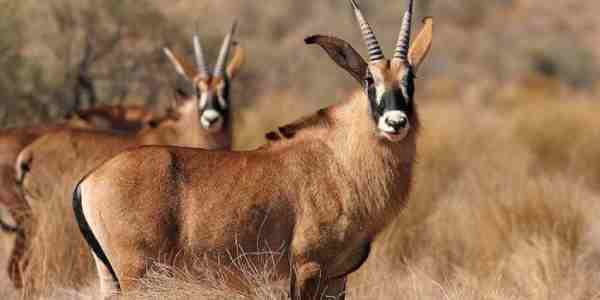
An antelope is a diverse group of animals, found in Africa, Asia, and Europe. They come in many different shapes and sizes, but all share one common trait: they have manes.
Antelope manes can be short and erect, like those of wildebeest, or long and flowing, like those of zebras. Some antelope even have manes that are black, grey, or brown.
Regardless of their appearance, all antelope manes serve the same purpose: to protect the animal from predators.
In Africa, where many antelope live, there are plenty of predators that would love to make a meal out of one of these unsuspecting creatures.
However, the antelope have a better chance of surviving attacks and escaping unscathed.
10. Domesticated and Wild Bactrian Camels
Scientifically known as Camelus bactrianus and Camelus ferus

The domesticated Bactrian camel and its wild counterpart are two extremely similar animals. As the hair on their neck may grow up to 10 inches long, they are the creatures with the longest manes!
There could be a lion out there with a longer mane, but nobody has yet discovered it. The mane’s main function is to keep the camel’s neck warm during the chilly winters of their native Mongolia.
The hair can also act as protection from predators because of how thick it is.
They often grow shorter manes than their domesticated counterparts, and the wild Bactrian camel is a severely endangered species.
But even a shorter mane can offer substantial defense from the elements and predators.
11. Lion-tailed Macaques
Scientifically known as Macaca silenus
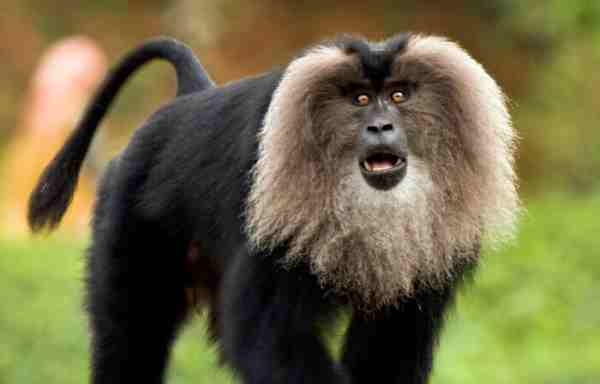
The lion-tailed macaque is a fascinating creature, and it is no wonder that it has captivated the imaginations of people for generations.
As the only monkey with a mane, the lion-tailed macaque is a truly unique species.
Found in South India, these monkeys are mostly dark in coloration, but both males and females develop a striking gray mane around their faces as they reach maturity.
Interestingly, lion-tailed macaques get their name not from their manes, but from their tails, which bear a resemblance to those of lions.
FAQs
Do tigers have manes?
Tigers don’t have manes, but the hair on the cheeks of older males is long and spreads out.
Which animal has a mane around its head?
As they age, male lions develop spectacular manes. These manes, which may reach a length of 16 cm, are a show of authority.
Do female animals have manes?
Male lions may be recognized by their distinctive mane, which they utilize to entice females. They roar to defend their territory or to summon other lions in their pride. Females are less loud and lack a mane.
Do leopards have manes?
Dewlaps are the name for these skin folds. One of the greatest methods to assess age in male leopards is to look for a dewlap that is prominent and well-developed.
What animal has a long mane?
The manes of Bactrian camels, which are neck and throat hairs that may grow up to 9.8 inches long, are seen on both wild and domestic animals.
A motivated philosophy graduate and student of wildlife conservation with a deep interest in human-wildlife relationships, including wildlife communication, environmental education, and conservation anthropology. Offers strong interpersonal, research, writing, and creativity skills.

